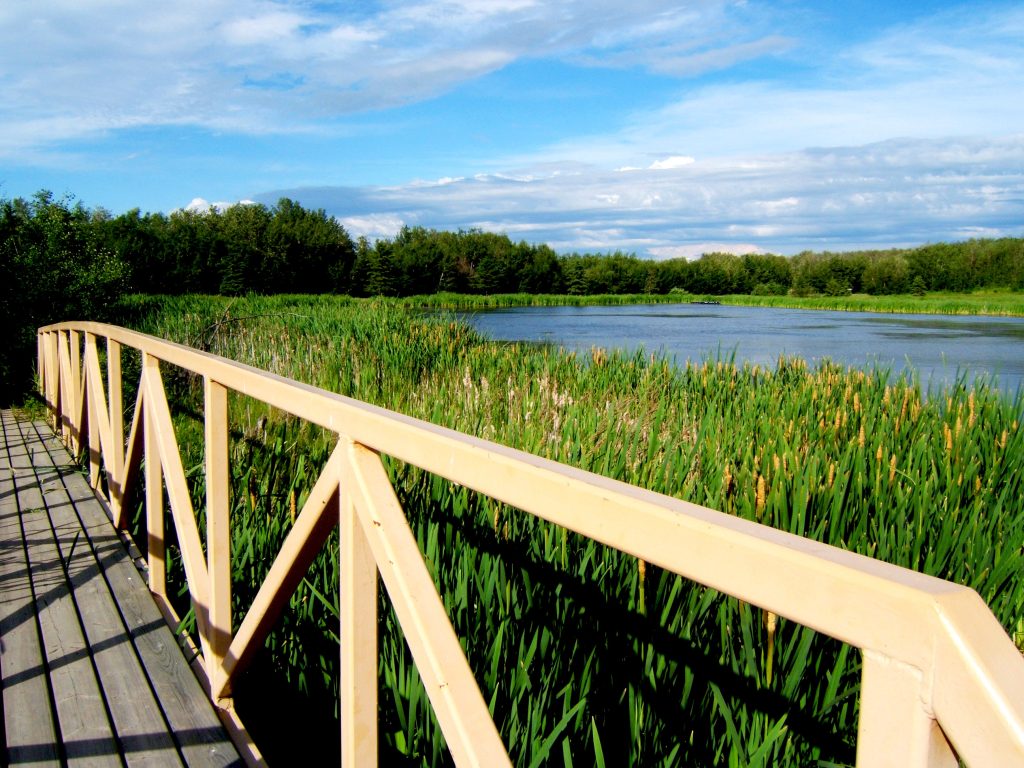My BIG Alberta Backyard – Beaver Hill Biosphere Reserve

BY STEPH WEIZENBACH, NATURE NETWORK COORDINATOR
Alberta is a great place to live. It’s a big beautiful province full of all kinds of natural wonders. This is where we introduce you to the diversity of wildlife, and unique and interesting wild spaces, that are part of your Big Alberta Backyard. This time, let’s explore the Beaver Hills Biosphere Reserve.
What is a Biosphere Reserve?
A Biosphere Reserve is an area where biodiversity — wild variety of plants and animals — meets sustainable development. The Beaver Hills Biosphere Reserve has a protected core, buffer zone, and transition area, all with an emphasis on conservation. It is an area where people come together to work, live, and play among ecologically important places while conserving the environment — keeping the plants, animals, air, water, and land healthy.
Beaver Hills Biosphere Reserve
Ten thousand years ago, the Beaver Hills region was covered by a huge sheet of ice over one kilometre thick. As the glacier receded (melted and shrank), it changed the landscape underneath it. The glacier deposited piles of rocks, rubble and dirt which make up the hills of the area today. The meltwater settled into depressions, creating ponds. This resulted in the “knob and kettle” moraine as we know it now. The landscape is a mixture of prairie pothole wetlands, lakes, and forest. It is a special transition zone between the southern parkland and northern boreal forest regions, making it home to a rich variety of plants and animals.
Dark Sky Preserve
The Beaver Hills Biosphere Reserve is a great place to go stargazing. The area is a dark sky preserve, where artificial light is kept to a minimum to reduce light pollution.
Reducing light pollution helps us all get a better view of the night sky, but that’s not all. Too much artificial light disrupts the natural activities of animals and even affects how plants flower and grow. The right amount of darkness makes for a healthier ecosystem.
You can reduce light pollution at your own home! Use shielded light fixtures and make sure they are directed downward. Using light timers and motion sensors will reduce the amount of time your lights are on.
Any clear night is a great chance for stargazing in the Beaver Hills Biosphere Reserve. Camp out this summer at Elk Island National Park or Miquelon Lake to enjoy the stars and the great outdoors. The Perseid meteor shower is an annual event that fills the sky with shooting stars each summer. The spectacular show occurs from July 17 through August 26, peaking on August 11 and 12.
BIOSPHERES BONUS! Nature Alberta has published booklets on both the Beaver Hills Biosphere Reserve (where you’ll find lots more information about the Beaver Hills Dark Sky Preserve) and the Waterton Biosphere Reserve, packed with great information on visiting these unique places and fun activities you can do there. Download yours today at bit.ly/MyBigAlbertaBackyard
This article originally ran in Nature Alberta Magazine - Summer 2021.
